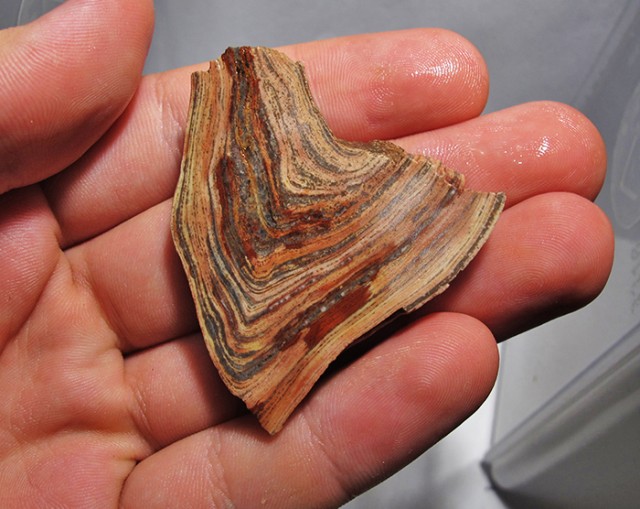
Rhyolite Gemstone: Properties, Meanings, Value & More
 Rhyolite (rai·oh·lite) is a light-colored rock made up of various crystals, including quartz and feldspar among others. If you’ve ever wished you could have all your favorite gemstones in one, rhyolite may be the one for you!
Rhyolite (rai·oh·lite) is a light-colored rock made up of various crystals, including quartz and feldspar among others. If you’ve ever wished you could have all your favorite gemstones in one, rhyolite may be the one for you!
Ever heard of granite? Rhyolite and granite share nearly identical compositions, but form slightly differently.
By the end of this guide, you’ll have all the information you need on rhyolite gemstone uses, history, and healing powers!
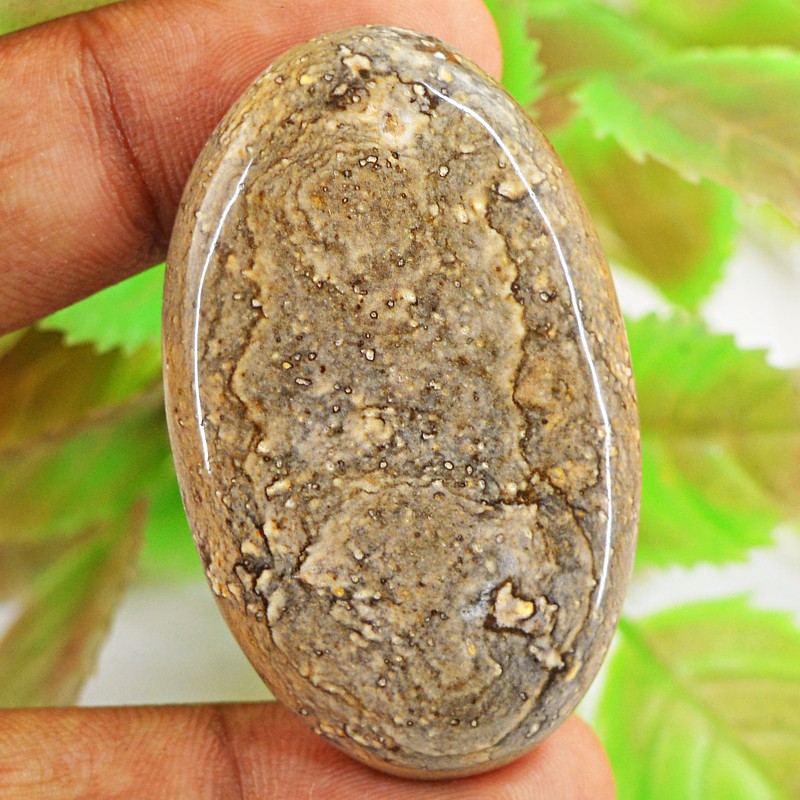
What Is Rhyolite Stone?
Rhyolite is usually a pink, off-white, or gray material used for jewelry, architecture, and abrasives.
Is rhyolite a gemstone? Yes, rhyolite is used as a semi-precious gemstone. Although, most gems are minerals while rhyolite is a rock, so it has two or more minerals inside.
The rhyolite rock type is volcanic-igneous. Among volcanic rocks, rhyolite has the highest silica (quartz) content.
Because rhyolite hardens from flowing lava, it has fascinating bubbles, layers, and banding. These unique patterns, especially in bird’s eye rhyolite, have led to the nickname “Streaming Rock.”
Rhyolite is a zodiac stone for Aquarius, Gemini, and Sagittarius.
Next, what are the characteristics of rhyolite?

Rhyolite Specifications & Characteristics
Rhyolite is part of the felsic family of igneous rocks, which are dominated by feldspar- and quartz-forming elements.
The rock’s composition varies, but always has quartz, alkali feldspar, and plagioclase feldspar. Usually, the stone is over 68 percent silica.
A rock must be 20-60 percent quartz and 35-90 percent alkali/potassium feldspar to be rhyolite. Plus, the amount of potassium feldspar must be at least twice the amount of plagioclase feldspar.
Rhyolites may be glassy, aphanitic (fine-grained), or porphyritic. Porphyritic rocks are fine-grained but have larger, visible crystals called phenocrysts.
What gems can be found in rhyolite? Some gems found in rhyolite are opal, agate, topaz, and bixbite (red beryl).
Notably, the opal variety called cantera opal has Mexican fire opal filling rhyolite.
Here are the remaining rhyolite properties:
Mohs hardness: Varies; Usually 6-7
Color: Usually gray, cream, or pink; Can be green, brown, red, orange, or multi-color
Crystal structure: None
Luster: Dull or vitreous (glass-like)
Transparency: Opaque
Refractive index: Around 1.54
Density: 2.35-2.70
Cleavage: None
Fracture: Subconchoidal
Streak: White
Given its variable composition, you may have already guessed there’s more than one type of rhyolite.
Types of Rhyolite
Rhyolite’s exact composition isn’t consistent, so there are many varieties. It’s also a common formation environment for various rhyolite minerals.
When you first look at rhyolite, its color-banding may make you wonder: Is rhyolite the same as jasper? Not exactly.
Rhyolite and jasper are different gems, but there are a few rhyolitic jasper varieties. One rhyolite jasper is rainforest jasper, which we’ll cover first.
Spherulitic Rhyolite / Rainforest Jasper
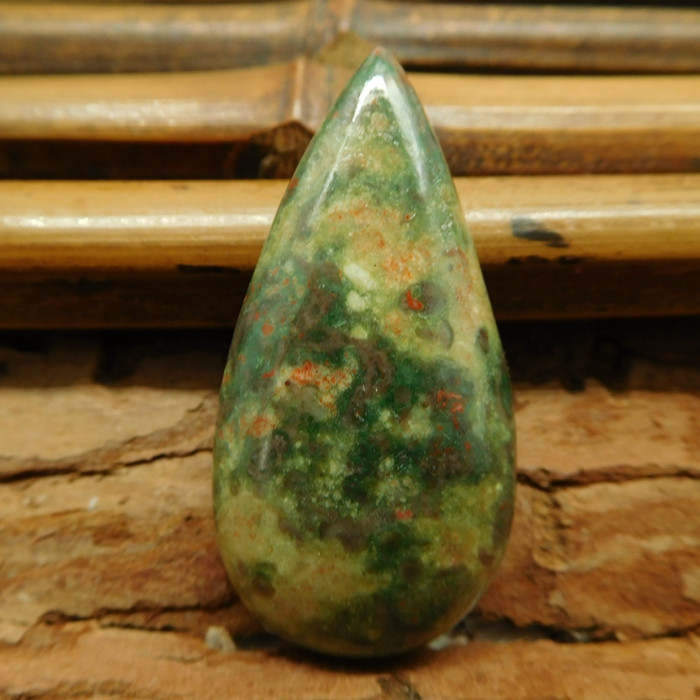
Surprisingly, this gem isn’t technically a jasper variety, though it may have jasper crystals inside. Then what is rainforest jasper? Rainforest jasper, or spherulitic rhyolite, is an Australian rhyolite lava.
These tough stones are mostly green or brown with color-zoning in cream and red. Rainforest jasper may also have cavities filled with quartz, agate, or opal crystals.
Obsidian
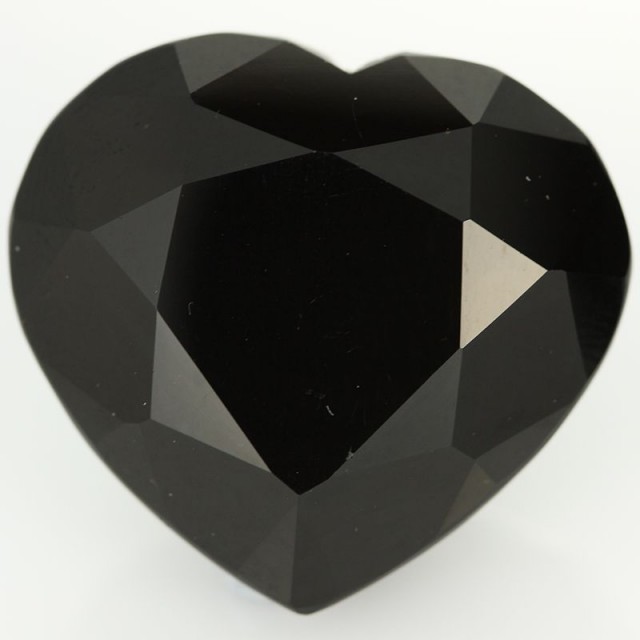
Obsidian is a black or gray form of rhyolitic volcanic glass. It forms through lava flowing on the ground instead of exploding. The lava cools so quickly that glass forms instead of crystals.
Pumice
Rapid cooling can also lead to rhyolitic pumice, a foamy-looking, lightweight, porous form.
When hot rhyolite rock explodes from a volcano, the pressure and temperature go down quickly. These changes form bubbles, then freeze those bubbles, creating pumice’s porous texture.
Tuff
Tuff is the other form of rhyolite resulting from explosive eruptions. This rock is a collection of volcanic ash, compacted from pressure.
Rhyolite tuffs have glassy, pumice-like shards and a rough crust of crystals like biotite, quartz, feldspar, and more. The stone must be 75 percent or more ash to count as tuff.
Apache Sage

Apache sage (often mistakenly called apache jasper) is a rhyolite variety from New Mexico, USA. This stone has a pink, cream, or red base color with dendritic and layered inclusions resembling scenery.
Wonderstone

Wonderstone is a gem-quality rhyolite from Wonderstone Mountain in Nevada, USA. Iron oxide causes banded shades of cream, yellowish-brown, crimson, and gray.
Hickoryite

Hickoryite is a yellow, red, and pink rhyolite from Durango, Mexico. The colors may be banded or spherical, similar in appearance to hickory wood.
Rainbow (or autumn) hickoryite is a slightly softer hickoryite with a tan or brown base, overlapped with bands of yellow, red, or pink.
Nevadite
Nevadite (not nevadaite) is a porphyritic rhyolite variety, containing many visible quartz crystals. These stones from Nevada, USA, resemble granite.
Llanite
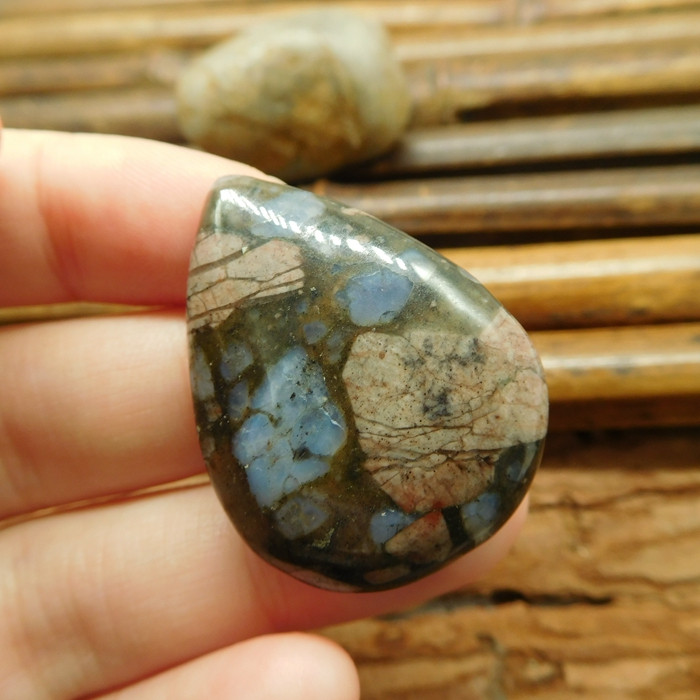
Llanite is a brown hypabyssal (or subvolcanic) rhyolite variety, solidifying 2km underground before being erupted. Most rhyolites solidify above ground, so llanite is unique.
The Llano Uplift in Texas, USA, produces this variety. The stone has blue quartz and pale gray-orange feldspar crystals.
Thundereggs

Thundereggs are geode-like spherical rocks that form inside layers of rhyolitic volcanic ash. Crack open these spheres and you’ll find chalcedony centers with opal, agate, jasper, gypsum, quartz, or a combination of these.
Their diameter ranges from around 1cm to over 1m, but they’re usually about 74mm (baseball-sized). Unlike geodes, thundereggs are solid, not hollow, and always hold chalcedony.
Rhyolite Rocks
Besides normal rhyolite, the two primary rhyolite rocks are peralkaline, meaning they differ from standard rhyolite in having more alkali metals and less aluminum. These two rocks are:
Comendite: Light blue-gray; Hard; Visible quartz, albite, and sanidine crystals
Pantellerite: Dark gray or green; Less aluminum and more iron than comendite; Visible anorthoclase or sanidine crystals
Phew, lots of varieties to track! Let’s take a break from listing to look at the rhyolite crystal meaning.
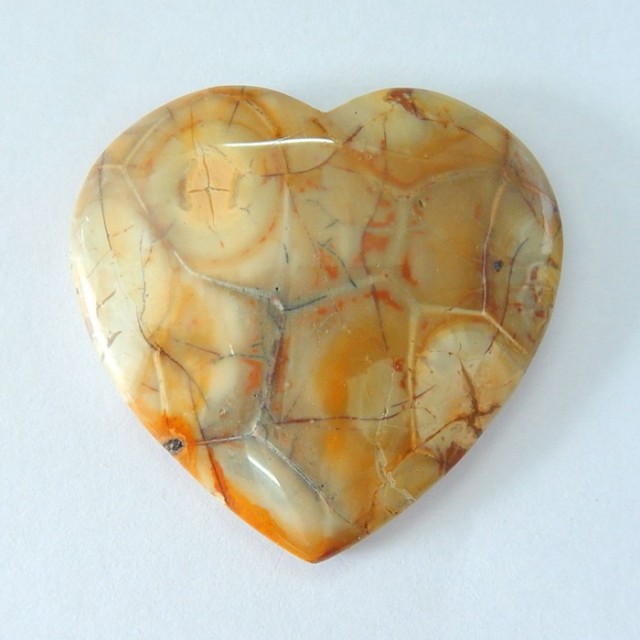
Rhyolite Gemstone Meaning & History
Rhyolite symbolizes progress and change. As a rock, rhyolite also represents longevity, strength, and a foundation for growth.
Ferdinand von Richthofen (or Baron von Richthofen), a German geologist, explorer, and geographer, chose the name in 1860. It derives from the Greek rhýax, for “stream of lava.”
History
Historical rhyolite uses date back to antiquity, covering weaponry, scrapers, gardening hoes, and architecture.
In prehistoric America over 11,000 years ago, people extracted rhyolite in present-day Pennsylvania and shaped it into arrowheads and projectiles.
Ancient Romans used tuff as a construction material. Similarly, the Polynesian Easter Island statues are almost all formed from rhyolite tuff.
Often-catastrophic volcanic eruptions are necessary to rhyolite’s formation. Luckily, only three have happened since 1900:
Alaskan Novarupta - 1912
Papua New Guinea’s St. Andrew Strait - 1953-1957
Chile’s Chaitén & Cordón Caulle - 2008
Spiritually, various cultures’ beliefs around rhyolite jasper properties made rainforest jasper popular for healing rituals.
Speaking of, what is rhyolite crystal good for?
Rhyolite Healing Properties
Like all healing stones, rhyolite’s metaphysical properties tie to its colors and spiritual energies. Most rhyolites are gray, possessing the inherent gray gemstone properties of balance, grounding, and refinement.
Tying to its symbolism, rhyolite crystal properties are said to help during periods of change or major life transitions.
What about rhyolite’s physical and emotional uses?
Physical Healing
When working with rhyolite, crystal healers recommend it for strengthening the immune system and muscles. It’s also said to detoxify the liver and kidney, along with treating infections and skin problems like rashes.
Emotional Healing
Rhyolite crystal benefits anyone struggling with self-acceptance by providing empowerment and greater perspective. The stone can increase creativity, problem-solving capabilities, and belief in your own potential.
By strengthening one’s mind and emotional fortitude, rhyolite can provide reassurance that you can handle whatever challenges life throws at you.
Chakra Healing
Chakra stones help clear out negative symptoms by balancing the energy center (chakra) where the symptoms manifest. What chakra is rhyolite associated with? Rhyolite is best for the heart chakra.
The heart chakra governs love, both for others and for the self. When it’s blocked, you may feel apathetic emotionally or unworthy of love.
Practicing rhyolite crystal chakra healing can balance the heart chakra, bringing feelings of acceptance, empathy, and self-love.
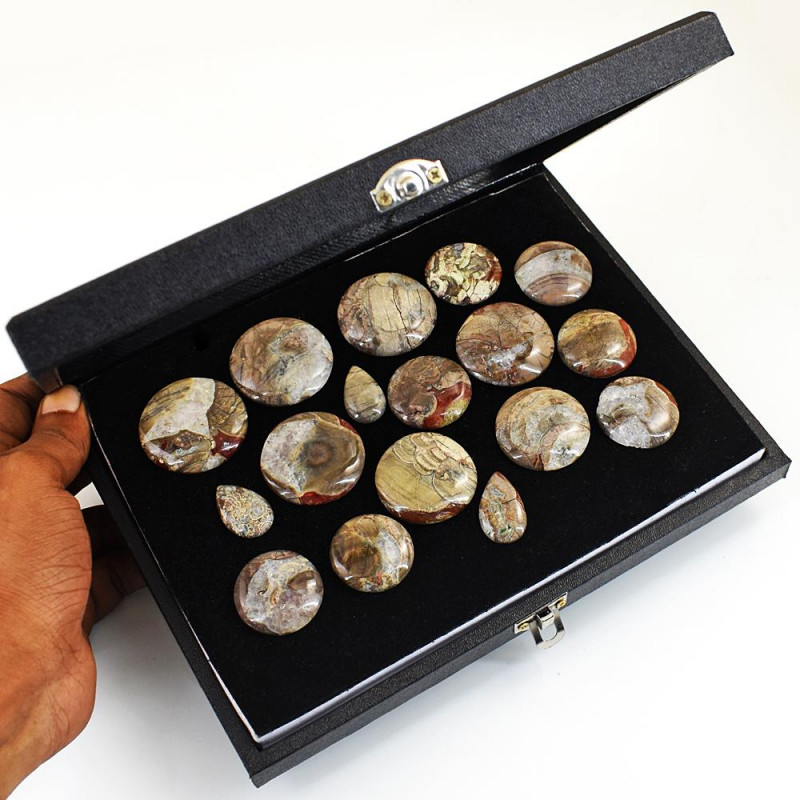
Rhyolite Gemstone Properties
Rhyolite doesn’t have grading criteria like most gemstones, but its cut and colors can influence value.
Cut
Rhyolite beads are the most common cut. In fact, rhyolite is only cut into faceted cuts for beads. The gemstones may also be cut as cabochons. Occasionally, landscapers use raw or carved rhyolite rocks for yard decoration.
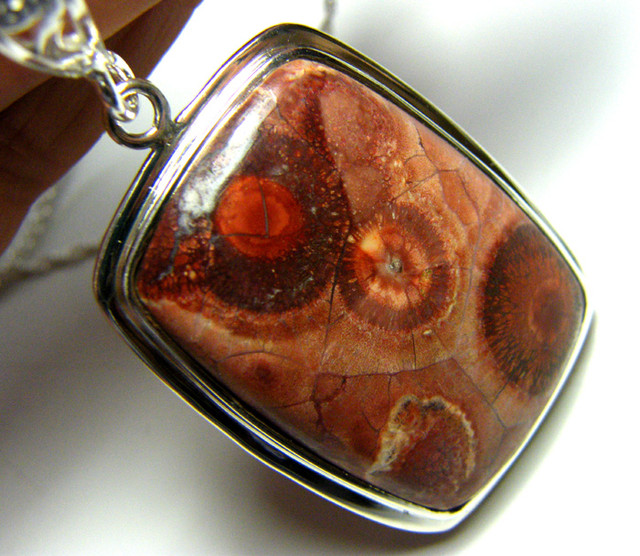 Image above: Bird's eye or orbicular pattern
Image above: Bird's eye or orbicular pattern
Colors & Patterns
Rhyolite often shows shades of tan, off-white, or pink. Each variety may bring new colors into the mix. Plus, some patterns, largely caused by inclusions, have their own monikers:
Bird’s Eye or Orbicular Rhyolite: Green base with swirling red, yellow, and brown bands
Mushroom Rhyolite: Green base with bubble matrix that creates a continuous pattern of gray masses resembling mushrooms
Spiderweb Rhyolite: Olive-green and reddish-brown with open, agate-filled cavities and inclusion pattern resembling leaves on a spiderweb
Value-wise, more colorful stones command higher prices. Most rhyolites are light because the felsic minerals that comprise the stone are pale. The elements present in the stone during formation determine its color.
On that note, how is rhyolite formed?
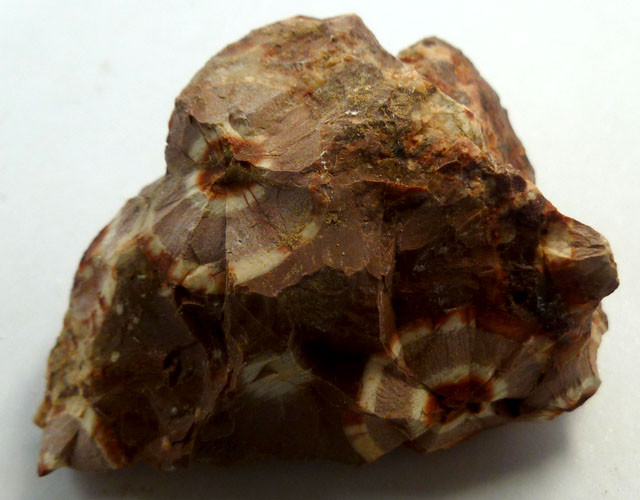
Rhyolite Stone Origins & Sources
Remember how we mentioned granite and rhyolite form differently? The difference is intrusive vs. extrusive volcanic activity. Is rhyolite intrusive or extrusive? Rhyolite is extrusive in its formation, while granite is intrusive.
Each rhyolite formed from liquid, rhyolitic magma first. But what is rhyolitic magma? How does rhyolitic magma form?
Rhyolitic magma is silica-rich, very viscous magma with more gas than basaltic magma. It forms when the thick, outermost layer of Earth’s crust that creates landmasses, called continental crust, is heated, melting the layer’s rocks and minerals into magma.
Then, the magma ejects from the volcano. The ejection is usually an explosive eruption, but may be a quiet, “effusive” lava flow.
Explosive eruptions produce pumice and tuff, while effusive eruptions produce obsidian and rhyolite. A volcano can erupt in both ways simultaneously, creating all four forms.
Most of the time, the cooling process is rapid, creating tuff, pumice, or obsidian. A rapid cooling process can also cause trapped gas to create open pockets, or “vugs.” Mineral solutions can seep into vugs, crystallizing into gemstone phenocrysts.
Sometimes, granitic magma can start forming crystals (phenocrysts) underground, then erupt, becoming gem-bearing rhyolite.
Mining Locations
Where is rhyolite rock found? Rhyolite stones come from volcanic mountains and volcanic regions on continental areas. Oceanic eruptions (on islands) rarely produce rhyolite, though Iceland is an exception.
Regions you can find rhyolite include:
Andes Mountains
Australia
Brazil
Cascades
China
Germany
Iceland
India
Indonesia
Mexico
New Zealand
Rocky Mountains
South Africa
Tanzania
Now, how much is rhyolite worth?
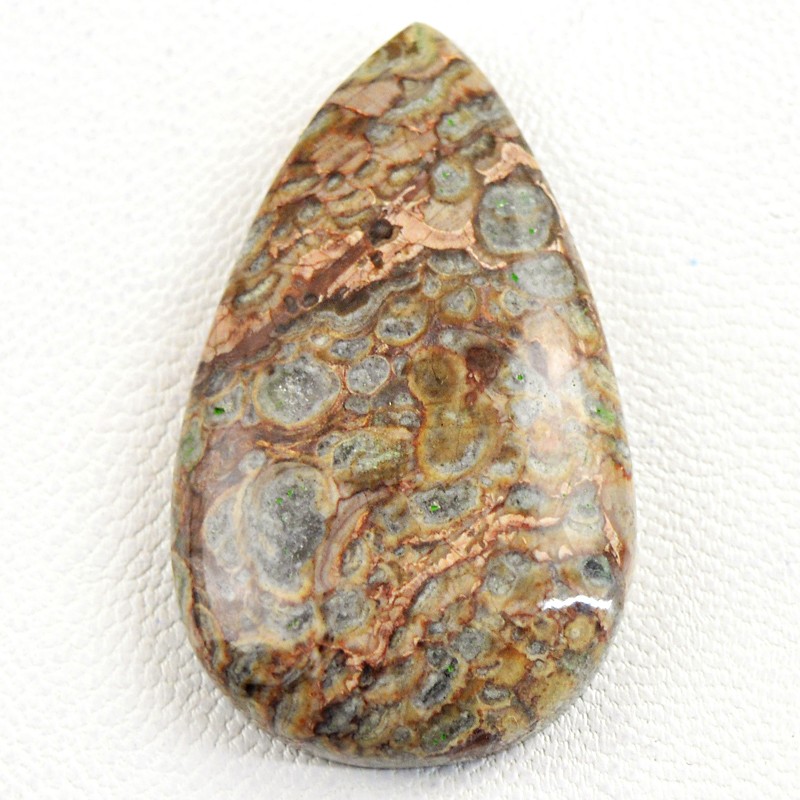
Rhyolite Price & Value
Rhyolite is an abundant stone, so prices are affordable. However, it’s not commonly used in jewelry, so not all stores may carry it.
Wonderstone and other colorful rhyolites can fetch prices of $10 per pound or higher, while less colorful stones are $2-$10 per pound.
At wholesale, rhyolite bead strands are $14-$30. Earring pairs range from $5-$10.
Cabochons range from $0.04-$0.80 per carat. Rough specimens are similarly priced from $0.02-$0.15 per carat.
Rhyolite Care and Maintenance
Rhyolite gemstone care is fairly simple. Clean rhyolite once a month by scrubbing it with a soft, dry cloth. Avoid rhyolite having prolonged contact with water.
Keep rhyolite away from other gems to avoid scratches.

Ready to Revel with Rhyolite?
Rocks like rhyolite may not be what you first think of for gemstones, but the range of colors, patterns, and varieties make rhyolite a great gem option.
Green and brown rhyolites make perfect earth-toned accessories, while the more wild reds and yellows of bird’s eye rhyolite compliment any fiery personality.
Looking for a sturdy gemstone with a rich array of patterns? Buy rhyolite gemstones today!
Search the Gemstone Encyclopedia
Related Auctions
Related Articles
Originally the Birthstones or gemstones were associated with a zodiac sign or the month of a individuals birth. Find out what your stone is and view the stones we have for sale
8th Feb 2021
There are dozens of quartz and chalcedony gems with various colors and patterns. Learn all about quartz properties and every type of quartz, from amethyst and agate to plasma and phantom quartz!
15th Oct 2020
Hackmanite is a pink to violet sodalite gem known for its unique color-change and luminescence. Learn why hackmanite is special, from its rare qualities to the types of hackmanite jewelry available.
28th Mar 2018
Latest Articles
Yugawaralite is a rare colorless, white, or pinkish zeolite crystal named for its discovery in Yugawara, Japan. Here we uncover the multifaceted history, properties, prices, and uses of yugawaralite.
24th Mar 2025
Simpsonite is a lesser-known mineral known on the gem market for its durability, yellow-orange color, and rarity. Discover all the properties, uses, prices, and history of simpsonite.
3rd Mar 2025
Kurnakovite is a colorless crystal related to inderite and rarely faceted but known among collectors. Explore the mineral traits, history, prices, and more in this kurnakovite guide.
17th Feb 2025
Article Categories
How To's is where you will find helpful articles from gem Rock Auctions on how to cut gemstones, select gemstones and buy gemstones.
9 Articles


